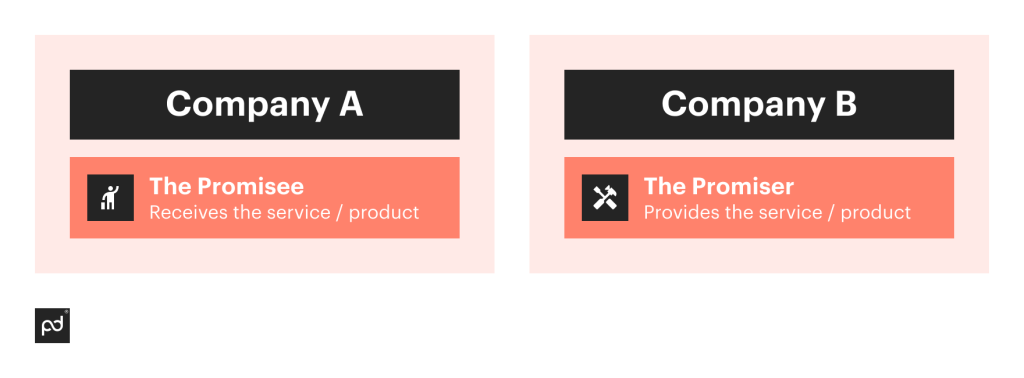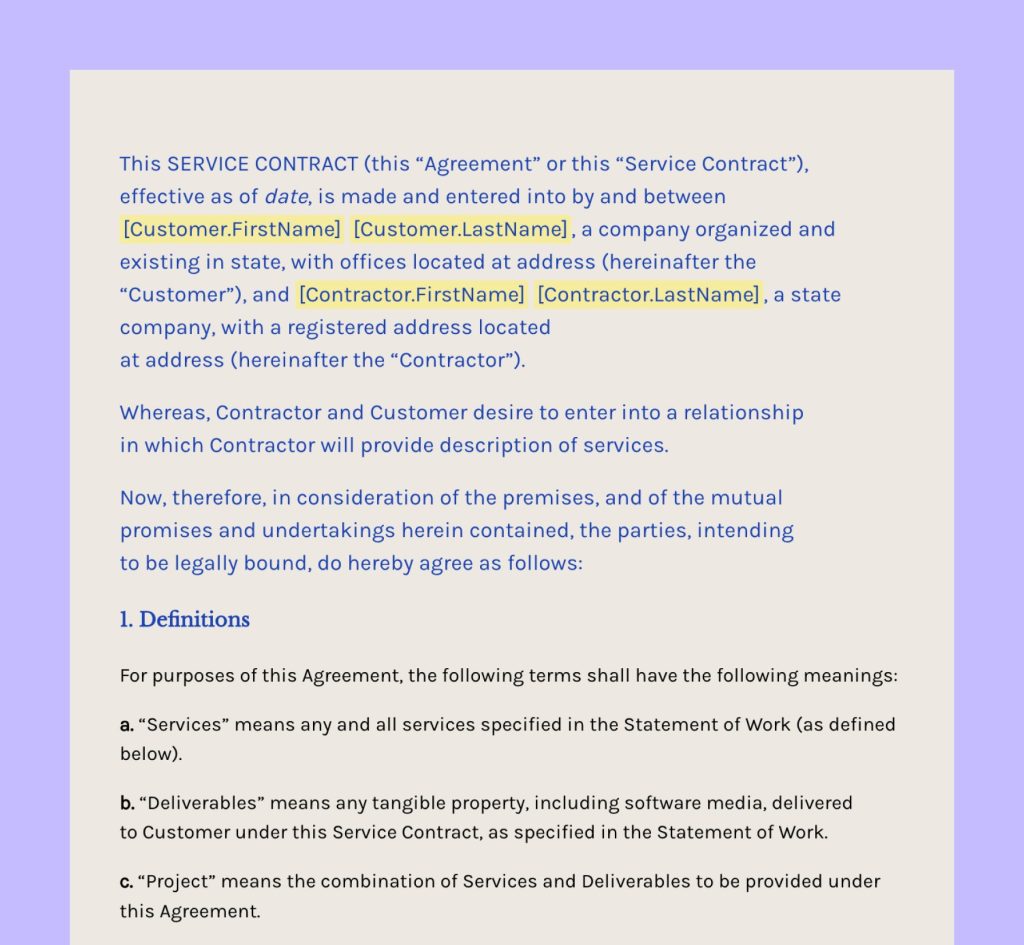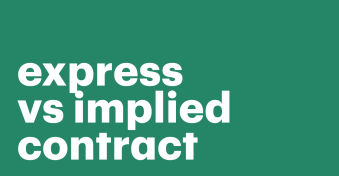In a nutshell, a contracting party is any company or individual involved in a contract.
If you are asked to sign a contract, you are a contracting party.
It’s a term you’ll often run into when dealing with business or personal contracts.
But why is the term significant, and more importantly, what does it mean for you?
In this article, we’ll talk about some of the following points.
Key takeaways
- The definition of a contracting party
- How to identify parties to a contract
- The benefits of being a party in a contract
- The rights of a contracting party
What is the definition of a contracting party?
Parties to a contract definition is all those involved in a contract.
A contract involves two or more parties committing to a legally binding agreement. The contract lifecycle can be broken into three stages.
- Offer – An individual or group has offered to (or avoided doing) something for a specific period.
- Consideration – Something is offered in return for the promise made in the offer stage. This could be money, services, or any other incentive.
- Acceptance – The offer is agreed upon by all involved.
Individuals or groups are classed as contracting parties if they are involved in any of these stages.
Who can be a contracting party?
As mentioned, anyone involved in a contract can be a contracting party.
And remember, a contract does not have to be a written document for there to be contracting parties.
In some states, such as New Mexico, there are scenarios where verbal contracts are recognized.
You are still a contracting party if involved in a verbal contract.
Identifying parties to a contract
Recognizing parties in a contract isn’t always straightforward.
The process differs depending on whether you are dealing with individuals or businesses.
Businesses
Recording parties on a business contract can sometimes be a little tricky.
You’ll need to include the following information:
- The legal business name
- Their entity type (e.g., corporation, partnership. etc.)
- The state in which they were incorporated
If this information isn’t readily available, some research will be needed.
The most straightforward route is to head to the secretary of state website they were incorporated in.
Individuals
Recognizing an individual who is a party to a contract is much simpler.
They should simply record their name in the introductory section of the contract.
Types of contract parties
There are two main types of contract parties. These are ‘the promisor’ and the ‘promisee’.
Let’s look at each.
- The promisor – The party committing to an agreement in a contract.
- The promisee – The party on the receiving end of the agreement. They have the legal leverage to demand that the promisor commit to their agreement.
3 benefits of being party to a contract
There are several benefits to being a party to a contract.
Let’s explore some of these advantages.
1. Legal protection
The most obvious benefit of a contract is that it provides legal protection to all involved.
It ensures that all commitments outlined are adhered to.
If any party does dishonor, it’s an agreement, and it can be taken to court and forced to comply.
2. Reduces the risk of misunderstandings or backtracking
Without a clear contract, your agreement is open to interpretation.
One party might have one understanding of a deal and the other a completely different view.
Similarly, a party might no longer want to follow a specific agreement.
A contract outlines clear commitments, so there is no room for misunderstanding or backtracking.
3. Establishes trust
In business, especially, trust is essential for forging lasting relationships.
Offering deals without establishing any legal accountability is a surefire way of removing trust.
A clear contract ensures protection for all parties and proves that you are genuine in your intentions.
What are the rights of a contracting party?
Every contract has a ‘good faith and fair dealing’ commitment.
Essentially, this commits both parties to fair play.
Both parties agree not to act in a way that would harm or muddy the terms of the agreement or the other party.
Other business rights include:
- The right to purchase products or services
- The right to sell products or services
- The right to refund, repair, or replace a damaged product
- The right of ownership over a purchased item or entity
- The right to regular payment
- The right to challenge the opposing party if a contract is breached
Examples of parties in a contract
As mentioned, two types of first-party contracts exist: the promisor and the promisee.
Let’s create an imaginary scenario to put this into context.
Company One signs a contract with Company Two for a SaaS payroll product.
They commit to paying $200 monthly for full access to the SaaS services.
Company Two is the promiser, committing to provide a service, and Company One is the promisee, receiving the product.

Is third-party contracting possible?
Contracts can have third-party beneficiaries.
This group is neither a promisor nor a promisee but still stands to benefit from the contract.
There are two types of third-party contractors. Let’s take a look at both.
- Intended beneficiaries – An intended beneficiary is a third party in the contract. Other parties are obligated to provide certain benefits to the party.
- Incidental beneficiaries – An incidental beneficiary receives benefits as a third party that receives benefits from an agreement but is not listed in the contract. Unlike intended beneficiaries, there is no legal obligation to provide any benefit to this party.
How do you list parties in a contract?
Whether a party is an individual or business entity, they should be listed in the same area.
The very top of your contract, often called the ‘preamble,’ is where the names and details of all relevant parties should be listed.
For a better understanding, take a look at the below image.

Contract management software that works at your speed is just what your business needs
By now, hopefully, you understand what a contracting party is.
If you’re running a business, there’s a good chance you’ll balance many contracts involving different contracting parties.
Manually managing these contracts can be challenging. You must stay on top of obligations, contract renewal, and storage.
This is where PandaDoc can come in handy. Our contract management software helps increase the speed and accuracy of your deals.
From one convenient location, you can store and manage all your contracts.
Intuitive interfaces help you craft dynamic contracts that help you satisfy the needs of your partners.
Why not try out PandaDoc’s solution for yourself? Try our 14-day trial today!
Disclaimer
PandaDoc is not a law firm, or a substitute for an attorney or law firm. This page is not intended to and does not provide legal advice. Should you have legal questions on the validity of e-signatures or digital signatures and the enforceability thereof, please consult with an attorney or law firm. Use of PandaDoc services are governed by our Terms of Use and Privacy Policy.


